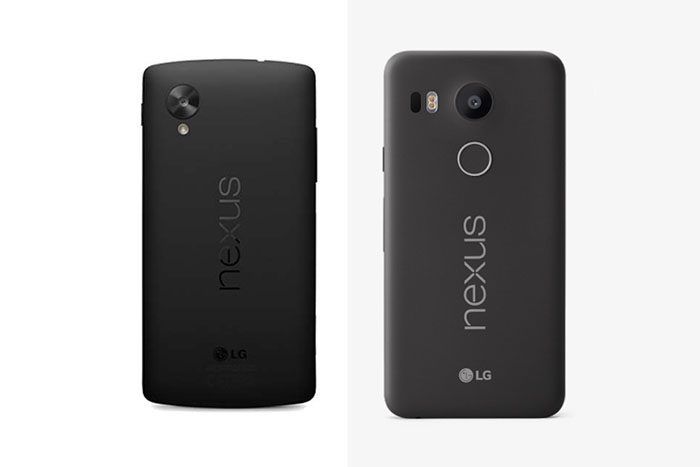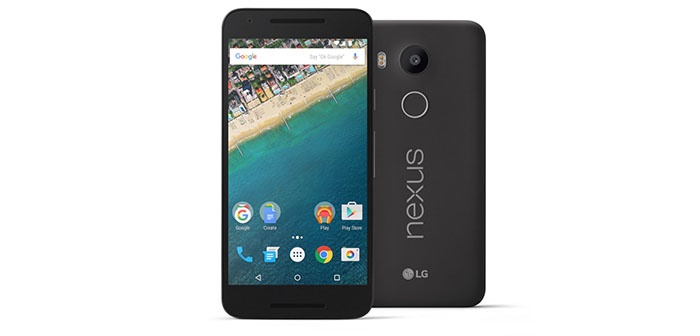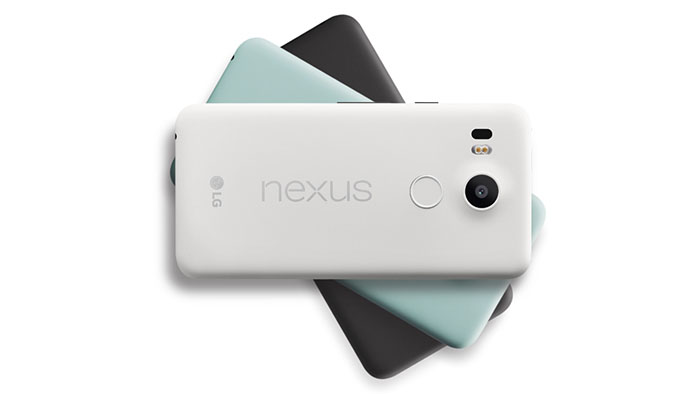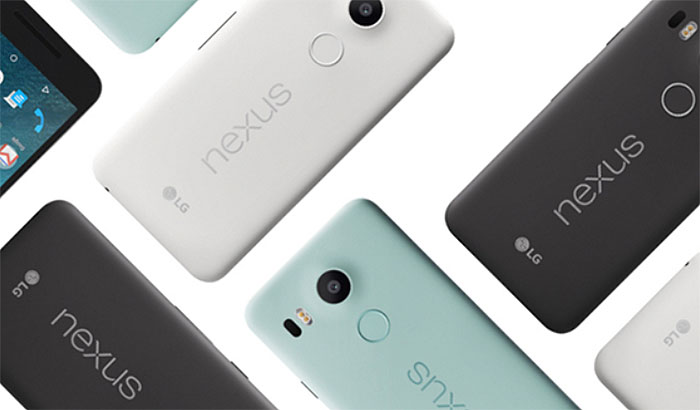I’m sure most of you are familiar with the Nexus 5, a very successful handset that came out in 2013 created from the collaboration between GOOGLE and LG. What made it so popular was that the Nexus 5 was always updated with the latest software, it ran pure Android (no bloatware from LG), the 8MP rear was reliable in most conditions and had the perfect proportions.
Unfortunately, the phablet sized Nexus 6 just didn’t have the same appeal, despite being improved in a lot of aspects. So, since GOOGLE has discontinued the Nexus 5, a lot of fans hoped for a real 5-inch-sized successor to the Nexus 5. And this year we may have finally got it.

LG and GOOGLE rejoined this year and released the Nexus 5X, a handset that promises to live up to the expectations and deliver the experience we all expected from the Nexus 6. So was the Nexus 5X able to meet all the expectations, thus making it the real successor to the Nexus 5? Let’s find out.
Note: There are two Nexus phones released this year, the aforementioned Nexus 5X and a larger, Nexus 6P (obviously a successor to the Nexus 6).
Design
There’s no doubt that LG can make great looking phones with premium designs (just look at the LG G4), but looking at the Nexus 5X you immediately see that it doesn’t fit in the premium realm.
So no glass and metal, you only get a lightweight polycarbonate case, with a matte finish, soft rounded corners, smooth curved edges and a thin metal frame. The phone is not slippery, it’s easily manageable with one hand and it is incredibly comfortable to hold.
But the rounded edges and the overall shape are not the only factors that render a comfortable phone manipulation, the Nexus 5X is also lightweight (weighs 4.8 ounces) and has a screen size of 5.2 inches (the phone measures 6.0×2.8×0.3 inches).
The rear panel doesn’t retain fingerprints, it has rounded edges but it doesn’t really look solid, it feels like it may pop off at any time. The front of the Nexus 5X is home to the display, which is protected by Gorilla Glass 3 (like LG G4) and around the display bezel, there is a small rim.
However, the buttons feel and placement are a bit of a disappointment. While the original Nexus 5 had smooth, high quality buttons with a rubbery texture, the Nexus 5X has two buttons on the right side, the volume controller and the power button, that both are small and feel cheap and superficial. Also the power button lacks the texture you find on the Nexus 6.
But that’s not all, the Nexus 5 had all these small details that enhanced the design (like the metal around the lens) that you just don’t find on the Nexus 5X, giving it a more plain look.
On the back of the 5X, at the centre, you’ll find the camera which protrudes a bit (a common occurrence to most handsets nowadays) and a small circle directly underneath, which has the role of a fingerprint scanner (yes, Nexus 5X has also takes advantage of the Nexus Imprint features from the Android Marshmallow).
Now, returning on the front of the phone, we find the speaker grills, home to a single speaker, a notification light located inside the bottom speaker grill, an ambient light sensor and a front facing camera.
On the bottom of the Nexus 5X there is an USB-C port and a 3.5mm headphone jack. There is a lot of debating about the new USB technology, most being against it. We consider that this change has to happen and although change is always hard, the sooner the better.
Note: Nexus 5X features a nano-SIM card, instead of the micro-SIM you find on the Nexus 5.
The new Nexus comes in three variants: Ice Blue, Quartz White and Carbon Black. No matter the choice, the phone comes with a black front.
The Nexus 5 was inexpensive when it arrived, it had a pleasant design and it was comfortable to hold, that’s why we loved it. The Nexus 5X, on the other hand lacks some aspects that the Nexus 5 had, it’s clear that GOOGLE and LG cut some corners in order to make the 5X cheaper, but overall it doesn’t seem too much of a compromise, unless you prefer glass and metal.
Display
The Nexus 5X features a 5.2in IPS LCD display (the same technology used on its predecessor), a resolution of 1920x1080p, a pixel density of 432ppi and a really wide viewing angle.
Comparing it with the last year’s Nexus 6, where the display had a far too large colour gamut, not enough brightness and overall was really oversaturated and assaulted your eyes, the Nexus 5X is a lot better.
Colours are a lot more balanced and more accurate, it has excellent contrast, blacks are deep and whites are very bright, making the display visible under direct sunlight, having a peak brightness of 486 nits.
Although the screen is vibrant, comparing it with other smartphones (especially the Samsung Galaxy S6, which still has the best display found on a handset), it may look a bit dull.
But, we really enjoyed this display, it’s a lot better than the Nexus 6 and it has managed to create a good internal balance in order to deliver a good visual experience.
Performance
Inside the case, the 5X sports a powerful 64-bit six-core Qualcomm Snapdragon 808 chipset (a 1.8GHz dual-core Cortex A57 and a 1.44GHz quad-core Cortex A53), the same chipset you can find on the LG G4.
It also has an Adreno 418 GPU, 2GB RAM (while it’s bigger brother, the Nexus 6P has 3GB RAM), 16 or 32GB internal storage memory and, unfortunately, there is no microSD slot.
A lot of handsets have migrated to 2 or 4GB, while the 5X has only 2GB of RAM and it may be enough for now, but in a year or so it may not, so the phone is not exactly a good solution in the long term. Obviously, an extra GB of RAM would have added to the price tag.
Thanks to the good quality hardware, the Nexus 5X performs really well. Navigating through Nexus 5X interface is fast and fluid, it handles games really well, there is no stutter and can even handle demanding 3D games (like Riptide GP2).
But, although it’s fast and responsive most of the times, sometimes it does stutter from time to time and an occasionally restart should get things back to normal. Also, booting up can take up to 50 seconds, which is a lot but understandable (2GB RAM).
Still, overall, the performance is pretty smooth.
The Nexus 5X also features a gyroscope, an accelerometer, a compass and a barometer used for motion detection and activating the Ambient Display, all working without the use of the main processor.
Software
The Nexus 5X runs a clean, stock version of Android 6.0 Marshmallow, which features subtle changes, focusing more on functionality and less on visuals, so it’s not as flashy as the Lollipop redesign. Running a clean version of Android is usual for Nexus devices (no bloatware!!).
So yes, the interface is not too different from the Android Lollipop, but we got changes to the permission system, improvements to the battery life, changes to the app drawer and the GOOGLE Now and Tap.
The new permission system is a great addition. If in the past, in order to install an app you would have to accept all permissions, now, you can install apps without accepting the permission request and only allow access to parts of hardware or software the first time they’re used.
So, apps are now forced to be more transparent about what data they collect. Yes, we know, Apple has used the system for a long time, but we’re glad that at last, Android adopted this really useful system.
GOOGLE Now and Tap is quite similar to the Apple’s 3D Touch (used in iPhone 6S). What it does is it scans the texts you are reading or listening when you press and hold the Home button (pressing it once let’s you access GOOGLE Now) and it brings up additional information.
This feature is extremely useful especially because of the contextual searching (and GOOGLE does not lack in the information department). For example, you’re watching a movie and when you hold down the Home button, it brings up links to Youtube videos, Facebook page, search results, images and so on about the movie.
It also works with actors, teams, restaurants and even photos. The possibilities are limited only by what data can GOOGLE gather, so, close to limitless.
The app drawer, now scrolls vertically and features an alphabetical list, giving you faster access to apps; also, five of your recently used apps will appear at the top. There’s also a quick launch bar that guesses what apps you’re trying to access using the letters you typed.
The Auto Backup for Apps is also a cool addition, which backs up everything on your phone automatically. In terms of power management, there is a new Android feature called Doze that puts the 5X to sleep when it’s not used.
Besides the software features, there is an Android Marshmallow feature connected to the hardware part, named the Nexus Imprint fingerprint. A lot of smartphones have a fingerprint sensor, but what differentiates it from the others is the position on the back of the phone (GOOGLE claims it’s easier to access this way) and the fact that it’s really fast.
It takes less than ten seconds to register a finger and about a half a second to unlock the phone, so that makes it faster than the Apple’s iPhone 6S Touch ID.
So, as you can see, the Nexus 5X runs a pure Marshmallow Android OS, it has a lot of new features that it successfully takes advantage of and in the end, we really enjoyed the new OS experience.
Camera
Nexus 5X features a 12.3-megapixel rear camera (identical to what you can find on the Nexus 6P) with a wide f/2.0 aperture, a Sony IMX377 sensor (with 1.55-micron pixels), laser autofocus, dual-LED CRI-90 flash and a 5-megapixel front camera with f/2.2 aperture.
The rear camera can shoot some pretty great photos, with clear details, rich colours, especially in good lighting. An odd thing is the omission of the OIS. GOOGLE claims that the larger sensor renders the OIS useless (the larger sensor can capture more light for better indoor photos) and in most situations there’s little to argue about (just don’t have shaky hands).
So, taking photos indoors and in low-lit spaces was a fine experience, not as good as the one with the Galaxy S6 and iPhone 6S, but still there was less noise, shadows weren’t too dark and overall photos were better than average.
Note: There are even more things that are missing comparing to the Nexus 6P, like the burst mode or 240fps slow motion mode.
Taking a photo of the sky in normal mode will result in a overexposed image, so you need to use the HDR+ mode in order to get more balanced whites, but be aware that processing is a bit slow (it may take one or two seconds).
Now, concerning the front-facing camera, know that it doesn’t shoot at a very wide angle, but the photos are reasonably sharp and detailed.
The Android Marshmallow’s Camera App is a bit of a mixed bag. It tries to be as simple as possible, removing all manual controls and leaving you with Flash, Timer and HDR+ controls. Let’s not forget the three modes, Panoramic, Photosphere and Lens Blur. This approach will please most users, but if you want more control, you can use a third party camera app.
The rear camera can record sharp, 4K videos at 30fps (does consume the storage in no time), a common feature for any new smartphone.
Battery Life
Nexus 5X packs a 2,700 mAh battery which will get you from morning to evening on moderate use. It’s not really a good performance, but also, not a bad one. Watching a 2-hour long movie will deplete your battery to 70% and looping a video non-stop will drain the battery in 7 to 8 hours.
The battery has the potential to offer more if you’re not the kind of person to check his/her phone every 10 minutes. That’s because of the Doze app (we talked about it in the Software section) which puts the apps into sleep mode, thus delivering more battery life.
But, as you already know, the Nexus 5X features an USB-C port for data and charging. Thanks to the new USB charging, the phone recharges completely in under 2 hours and we got 25 percent in under 30 minutes.
Note: Unfortunately, there is no Wireless Charging.
An important thing you need to know is that the charging cables from the OnePlus 2 should not be used with the Nexus 5X or Nexus 6P because it seems that it lacks an important resistor and it may harm your phone if it support fast charging (like Nexus 5X and 6P).
Conclusion
We saw that the new Nexus 5X has a great camera, the new Android Marshmallow runs smoothly and is seamlessly integrated, it can run resource-heavy games and the display is great. The design is not exactly premium and the battery life is not the best, but these were the compromises GOGGLE had to make in order to keep the Nexus 5X affordable.
So, overall, this is a great phone, worthy as a successor for the Nexus 5, but its only problem is the competition. Nowadays mid-range phones have become more affordable, are packed with flagship worthy specs and although the Nexus 5X fits right in this description, it’s not the only one who does, like Nexus 5 was when it arrived on the market.










